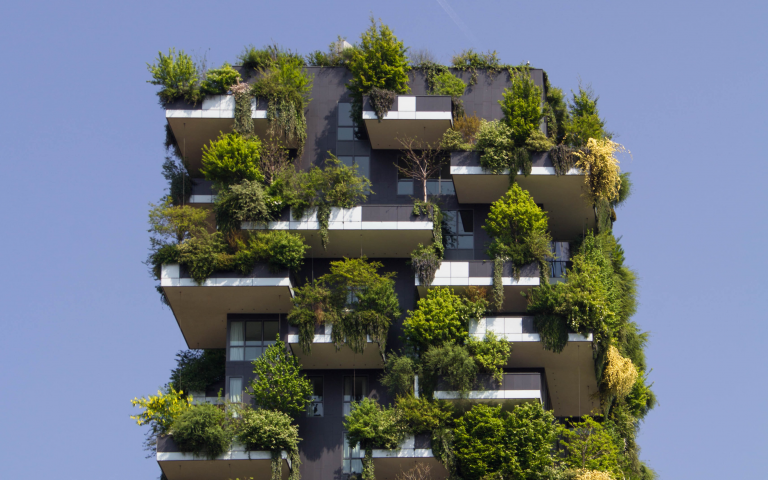IEDE academic interviewed by BBC News about how to keep cool when the office heats up
27 August 2021
Working from home can have its benefits and its downsides, especially during periods of high temperatures which are becoming more and more frequent due to climate change.

In London especially, the financial services, public administration and retail sectors are exposed to productivity losses due to high heat. And it's not only paid workers who are affected. A study in the US suggested that students' exam results are poorer in hotter years.
Dr Anna Mavrogianni, Associate Professor at UCL Institute for Environmental Design and Engineering, researches sustainable building and urban design, and together with colleagues has investigated London care homes, where there's a mismatch between thermal comfort levels of elderly residents and younger workers. Dr Anna Mavrogianni spoke to BBC Business about indoor overheating mitigation strategies for workplace:
In some ways they were sacrificing; they were happy to work in these uncomfortable conditions because it was perceived as beneficial to the occupants."
But these perceptions, while well-meaning, can be harmful, not just to workers moving around frequently, but also to the people they are looking after - older people with health conditions that make it hard to gauge just how hot it is.
Some common-sense measures can help reduce the risks of overheating. One useful example is easing restrictive uniform requirements and dress codes for workers during hot weather. Dr Mavrogianni advises building managers to switch off any equipment that's not in use, like photocopiers, as it all contributes to internal heat. Dr Mavrogianni stresses:
Surprisingly, it can make a lot of difference. It's also important for individuals to be able to manage their local environments. People tend to be more tolerant of warm conditions if they're able to adjust their environment. Being able to open the closest windows or to manage temperature settings can hugely improve an indoor worker's thermal comfort."“Surprisingly, it can make a lot of difference. It's also important for individuals to be able to manage their local environments. People tend to be more tolerant of warm conditions if they're able to adjust their environment. Being able to open the closest windows or to manage temperature settings can hugely improve an indoor worker's thermal comfort. "
For the many people who have shifted to remote work during the Covid-19 pandemic, flexibility in working hours allows them to adapt their days not only around their personal lives, but also around their environmental conditions.
Malleable building design, along with flexible working hours, can help to keep indoor workers healthy. In offices, workstations that are pushed up against windows could be moved away from sources of heat during the summer.
While air conditioning is necessary in some places, it shouldn't be the default everywhere. As energy-hungry air conditioners worsen climate change and will strain electricity systems in some places, climate experts promote more passive cooling options to improve ventilation. Dr Mavrogianni comments:
Building stock should be better prepared to respond to heat stress overall. Buildings in the UK were designed to keep heat trapped in buildings. Thus, much more heat resilience needs to be incorporated."
She comments that shades tend to be more effective at cooling than internal shades (although they won't be affordable or feasible for all). In addition, transitional spaces, like shaded courtyards and atria, can acclimatise people to temperature differences between indoors and outdoors. Remote workers shouldn't be overlooked, given the expansion of home-based work during the Covid-19 pandemic.
“I think there should definitely be some form of support for assessment for someone's home working environment."
For example, companies may be able to negotiate group discounts with energy companies for the renewable energy that powers their home workers' cooling devices. Companies could also support the installation of low-flow and highly efficient appliances for remote workers in drought-stressed locations. Empty office buildings with powerful cooling systems could also be repurposed during heatwaves, so that people can use them as cooling centres.
Certain devices, like thermometers and humidity meters, could help as well. Dr Mavrogianni explained how poor insulation can become an occupational health issue for home-based workers, in complex ways and aggravate any health conditions they may already have.
“Having a thermometer on every workstation would mean that people could flag up if there are any issues. They would have the evidence to go back to their manager and show how there's a problem that needs to be addressed."
Supporting home improvements and the landscaping around offices can improve the heat resilience of buildings and the people who live and work in them.
Links
Image - photo by Victor on Unsplash
 Close
Close

